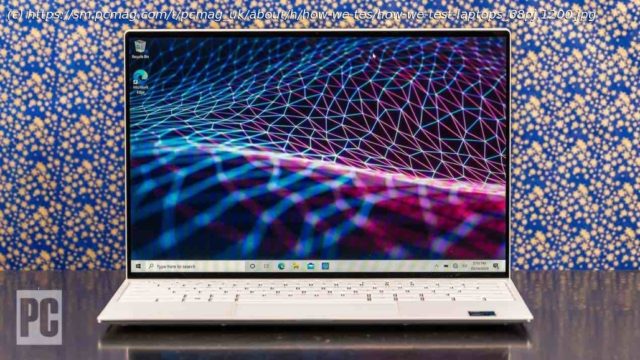Standardized, repeatable testing is a key facet of all of the reviews we do at PCMag.com. Here’s a rundown of how we test every laptop that hits the bench at PC Labs.
The laptop review process at PCMag.com carries on core traditions that date back to the establishment of PC Labs in 1984: We compare each system to others in its category on the basis of price, features, design, and hands-on, repeatable performance tests. To evaluate performance, we use an array of benchmark software and real-world applications and games, carefully chosen to highlight the strengths and weaknesses of a PC’s mix of components. That evaluation ranges from the CPU and the memory subsystem to the machine’s storage hardware and graphics silicon. We test production units with the latest updates and drivers available; pre-production or prototype systems are described in preview stories, not reviews with benchmark results and five-star-scale ratings. We regularly evaluate new benchmark solutions as they hit the market and overhaul our testing procedures to keep pace with the latest technologies. In August 2021, we rolled out a new suite of benchmarks, replacing those we’d been using for several years. The downside of changing our benchmarks is that it resets the database of tested PCs that we can use for comparisons in reviews (though we have been running the new tests on every recent notebook we can get our hands on to build it back up). The upside is that it gives us more current, more accurate comparisons that will only get better as we add more data. Our laptop testing focuses on four roughly divided aspects of performance: productivity and content creation, graphics and gaming, battery life, and display quality. Here’s a breakdown of each. Except for our battery rundown, we conduct tests with the laptop running on AC power and Windows 10’s power profile set to best performance rather than battery conservation. Productivity Testing PCMark 10 Our first (and arguably most important) benchmark test is UL’s PCMark 10. This wide-ranging suite simulates a variety of Windows programs to give an overall performance score for office workflows. The tasks involved include such everyday staples as word processing, web browsing, videoconferencing, and spreadsheet analysis. The PCMark 10 launch screen Running PCMark 10: the video-calling simulation We run the primary PCMark 10 test (not the Express or Extended versions), which yields a proprietary numeric score. Results over 4,000 or 5,000 points indicate excellent productivity for everyday Microsoft Office or Google Workspace tasks. Running PCMark 10: web browsing simulation Results from the PCMark 10 test can be used to compare systems’ relative performance for everyday tasks. (PCMark 10 is also used by large organizations to gauge potential new hardware’s suitability to workloads, compared with existing installed hardware.) Bear in mind, however, that PCMark 10 results, like those from most of our benchmark tests here, are highly sensitive to the specific configuration of the PC being tested. PCMark 10 Full System Drive Storage Test We also run PCMark 10’s Full System Drive storage subtest, which measures the program load time and the throughput of the laptop’s boot drive. Nowadays, that is almost always a solid-state drive rather than a spinning hard drive. The PCMark 10 Storage Test launch screen Like the productivity test, the PCMark 10 Storage test delivers a numeric score with higher numbers indicating quicker response. The PCMark 10 Storage Test in progress The benchmark is designed to factor in lower-end Serial ATA bus architectures and higher-end PCI Express/NVMe ones alike. It aims to quantify the real-world differences in performance attributable to these different drive types. (Earlier versions tended not to differentiate much between various implementations of SSD.) Cinebench R23 Maxon’s Cinebench is a CPU test that uses the company’s Cinema 4D engine to render a complex scene. We use the test’s multi-core benchmark, which exercises all of a processor’s cores and threads—the more powerful the chip, the higher the score. Cinebench tends to scale well with more cores and threads, as well as with higher clock speeds. A Cinebench R23 render in progress Cinebench is a raw test of a PC’s number-crunching ability, and it is paralleled in applications ranging from spreadsheet summations to computer-aided design and 3D rendering. The score reflects how well a laptop will handle processor-intensive workloads. Geekbench 5.4 Pro Primate Labs’ Geekbench is another processor workout. It runs a series of CPU workloads designed to simulate real-world applications ranging from PDF rendering and speech recognition to machine learning. Results screen for Geekbench Pro We record Geekbench’s Multi-Core Score. (Higher numbers are better.) Geekbench is especially handy because, unlike many other common benchmark tests, it has versions for many platforms (including Apple’s macOS and iOS), which can enable valuable cross-comparisons. HandBrake 1.4 Video editing is one of the most demanding tasks for a PC. HandBrake is an open-source video transcoder for converting multimedia files to different resolutions and formats. Setting up the Handbrake transcoding test with Tears of Steel We record the time HandBrake takes, rounded to the nearest minute, to encode a 12-minute 4K H.264 video file (the Blender Foundation movie Tears of Steel Tears of Steel) to a more compact 1080p version. We use the software’s Fast1080p30 preset for this conversion. This is primarily a CPU test. Like Cinebench, it scales well with more cores and threads, and in systems that have the robust thermals to handle heavy, sustained processing loads over several minutes. Because this is a timed test, lower times are better. PugetBench for Photoshop (Using Adobe Photoshop 22 CC) Our final productivity test is Puget Systems’ PugetBench for Photoshop, which uses version 22 of Adobe’s popular image editor to measure a PC’s performance for content creation and multimedia applications. PugetBench is an automated Photoshop extension that replaces our former stopwatch test, which ran through a scripted workload using a 2018 version of the software. PugetBench test in progress with Adobe Photoshop 22 PugetBench executes a broad range of general and GPU-accelerated Photoshop tasks ranging from opening, resizing, rotating, and saving an image to applying masks, gradient fills, and filters (including Lens Correction, Smart Sharpen, Field Blur, and Tilt-Shift Blur). The PugetBench for Photoshop Overall Score is a numeric value based on a 50/50 split between the general and filter tasks. (Higher numbers are better.) This benchmark exercises both the system’s CPU and its graphics chip or card, as well as its memory and storage subsystems.






